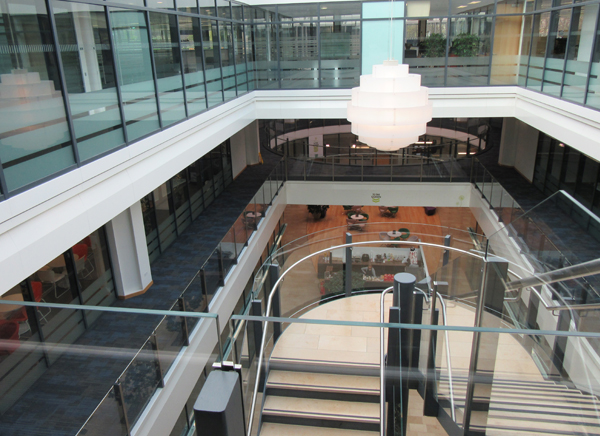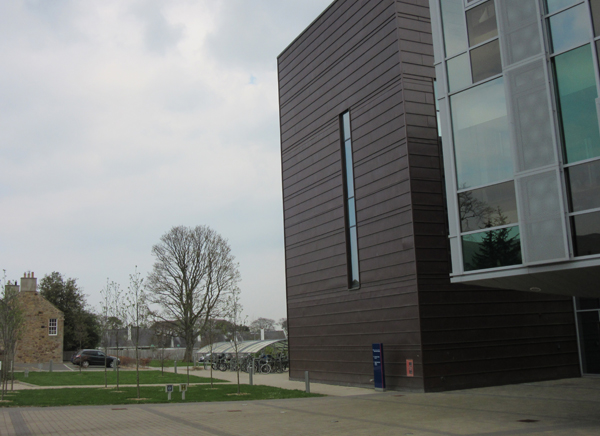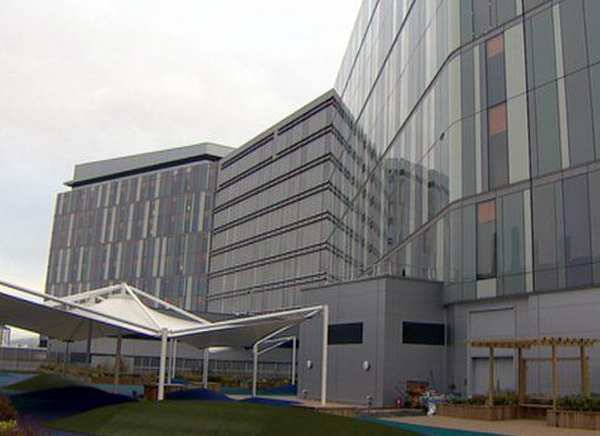Commercial
THE CHALLENGE
No.1 Tanfield House, Edinburgh
No. 1 Tanfield House is an attractive, ultra-modern office facility and, amongst others, is home to two businesses operating in the e-commerce sector and active in a globally connected ethernet world that mandates business continuity and safeguards for vital electronic equipment. Craneware and Dell are located on the 2nd and 1st floor levels respectively and gaining access to these offices with fire suppression system equipment played a part in the decision making process.
THE SOLUTION
FM-200® was ultimately chosen by both companies . FM-200® would offer benefits such as speed of suppression, cylinder footprint and safety. Stored as a liquid rather than a gas, it requires less storage containers than inert gas systems and moving containers during periodic testing was a major consideration. Where business continuity is important in electronic environments, gaseous agents are usually the preferred choice.
THE CHALLENGE
The Roslin Institute at the University of Edinburgh
The Roslin Institute is a Biotechnology and Biological Sciences Research Council (BBSRC) National Institute. In March 2011, the Roslin Institute moved to a new £60 million state-of-the-art building located on the University of Edinburgh’s Easter Bush campus. Vipond were called in to provide proposals for protecting the computer server rooms on the Ground Floor and Level Three of the new building. These facilities are dependent on secure computer services and if these services were interrupted due to an outbreak of fire the direct consequences could be immeasurable.
THE SOLUTION
Within the new building two computer server rooms would be built, one on the ground floor and the other on level three. These would demand automatic fixed firefighting systems which would not interfere with the data processing if a fire occurred. Due to the nature of the electronic areas to be protected, a high hazard design concentration would be required in accordance with BS EN15004. An IG-55 gaseous fire suppression system was selected for each room. IG-555 is an equal blend of Nitrogen and Argon, both naturally occurring gases, ensuring that this system has essentially no effect on the environment.
THE CHALLENGE
Stansted Airport, Essex
During 2014/15 the airside retail complex at London’s third busiest airport, Stansted, was to be completely refurbished. This involved a comprehensive strip-out and reconfiguring of the internal building fabric including the building services. The life safety fire sprinkler system was a vital part of these services and this too had to be stripped back to the main supply pipe downstream of the control valves. From 2013 Vipond Fire Protection, working closely with Carillion, and Jacobs were tasked with carrying out all operational works whilst the airport remained open for business.
THE SOLUTION
The new installation was based on a complete redesign of the system to LPC regulations Ordinary Hazard Class 3 with BS EN12845 life safety enhancements. This covered 42 new retail units, food outlets and duty-free shops. The airport required two levels of protection due to congestion of services at high level, one at the ceiling soffit and one below the other building services.
THE CHALLENGE
South Glasgow University Hospital, Glasgow
The new South Glasgow University Hospital opened in May 2015. The 14 floor multiplex has over 1100 adult beds and in excess of 250 beds in the children’s hospital plus state-of-the-art Critical Care, Theatre and Diagnostic Services, 29 theatres and a dedicated helicopter landing pad. Both the Adult and the Children’s hospital each have a computer room. Failure of the equipment in the rooms following a fire could be catastrophic thus they required a comprehensive and sensitive detection and suppression system.
THE SOLUTION
With outline system features established, the decision to use a gas suppression system was finalised. Cost savings in consequential losses made by using clean agent systems would be substantial. The decision now fell to a choice between a halocarbon system such as FM-200® or an Inert gas system. Halocarbon systems are stored as liquids but discharge from the nozzles as a vapour in the same way as Inert gases but the halocarbon systems offer more compact storage for the cylinders and consequently have a smaller storage footprint thus FM-200® was the customer’s system of choice.




